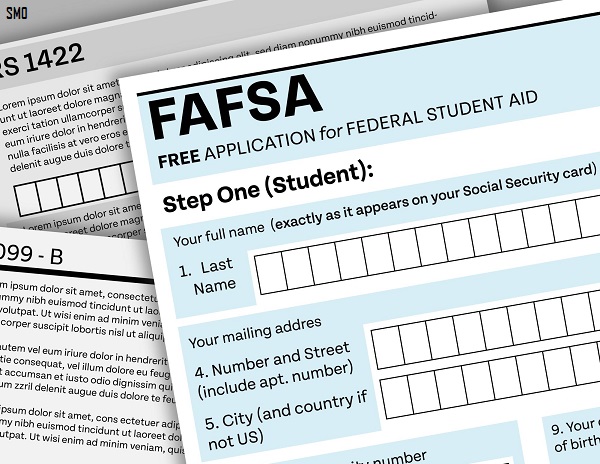The Free Application for Federal Student Aid (FAFSA) is the gateway to unlocking billions of dollars in financial aid for students in the United States. Whether you’re attending college, graduate school, or a vocational program, filling out the FAFSA can open the door to grants, federal loans, and work-study programs.
In this 2025 comprehensive guide, we’ll explore:
- What FAFSA is and how it works
- Who should apply and when
- Step-by-step application process
- Common mistakes to avoid
- Key deadlines
- How to interpret your Student Aid Report (SAR)
- Tips to maximize your federal student aid
What Is FAFSA?
FAFSA stands for Free Application for Federal Student Aid. It’s the official form used by the U.S. Department of Education to determine your eligibility for federal student financial aid.
Aid types you can get through FAFSA:
- Pell Grants – Free money for undergraduates
- Federal Student Loans – Subsidized and unsubsidized
- Federal Work-Study – Part-time campus jobs
- FSEOG – Federal Supplemental Educational Opportunity Grant
- PLUS Loans – For parents and graduate students
FAFSA is completely free to submit. Never pay a service to complete it.
Why FAFSA Is Important
- Required by most schools for any financial aid
- Determines federal and many state aid programs
- Helps secure institutional aid and scholarships
- Can reduce your student loan burden with grants and work-study
Even if you think you won’t qualify, submit it anyway—some aid isn’t need-based!
FAFSA 2025–2026 Deadlines
| Application Opens | October 1, 2024 |
| Federal Deadline | June 30, 2026 |
| State Deadlines | Vary (check FAFSA Deadlines) |
| School Deadlines | Vary (often earlier than federal) |
Apply early to get maximum aid. Some programs have limited funds.
FAFSA Eligibility Requirements
To apply, you must:
- Be a U.S. citizen or eligible noncitizen
- Have a valid Social Security number
- Be enrolled or accepted into an eligible program
- Have a high school diploma or GED
- Maintain satisfactory academic progress
- For males: Be registered with Selective Service (if required)
- Not be in default on any federal student loan
What You Need to Fill Out FAFSA
Before applying, gather:
- Your FSA ID (create at fsaid.ed.gov)
- Social Security Number (SSN)
- Driver’s license (optional)
- Federal income tax returns, W-2s
- Records of untaxed income
- Bank account and investment records
- Parent info (if you’re a dependent)
Use the IRS Data Retrieval Tool (DRT) inside FAFSA to import your tax data automatically.
How to Fill Out the FAFSA – Step-by-Step
Step 1: Create Your FSA ID
Visit fsaid.ed.gov and set up your login. Both you and a parent need one if you’re a dependent.
Step 2: Go to studentaid.gov
Click on “Apply for Aid” > “Complete FAFSA Form”.
Step 3: Choose the Right FAFSA Year
For students starting college in fall 2025, fill out the 2025–26 FAFSA.
Step 4: Add School Codes
You can send your FAFSA to up to 20 colleges. Use their Federal School Codes.
Step 5: Answer Dependency Questions
Determine if parental info is required.
Step 6: Enter Financial Info
Use the IRS DRT or manually input tax and income details.
Step 7: Sign & Submit
Both student and parent must sign using FSA ID. Submit online and wait for confirmation.
Understanding Your Student Aid Report (SAR)
Once you submit FAFSA, you’ll receive a SAR that summarizes your info and displays your Expected Family Contribution (EFC)—soon to be called Student Aid Index (SAI).
What SAR Includes:
- Summary of answers
- EFC/SAI
- Any issues or missing info
- Aid estimate (based on your data)
You’ll usually receive the SAR within 3–5 days of online submission.
Types of Federal Financial Aid You Can Get
| Aid Type | Description | Repayment Required? |
| Pell Grant | Up to $7,395 (2025) | ❌ |
| FSEOG | $100–$4,000/year | ❌ |
| Federal Work-Study | Campus part-time jobs | ❌ |
| Subsidized Loan | Gov’t pays interest in school | ✅ |
| Unsubsidized Loan | Interest starts immediately | ✅ |
| PLUS Loans | For grad students/parents | ✅ |
Common FAFSA Mistakes to Avoid
- Missing the priority deadline
- Using the wrong FAFSA year
- Not reporting parental information correctly
- Leaving blanks instead of entering “0”
- Not signing with both FSA IDs
- Assuming you’re not eligible due to income
Remember: there’s no income cap for FAFSA!
FAQ – Free Application for Federal Student Aid
Q1: Do I need to fill out FAFSA every year?
Yes. It must be updated annually to remain eligible for aid.
Q2: Is FAFSA only for low-income families?
No. Many aid types are non-need-based, including Unsubsidized Loans and some work-study programs.
Q3: What happens if my financial situation changes?
You can file a Special Circumstances Appeal with your school’s financial aid office.
Q4: Is FAFSA only for U.S. citizens?
No, eligible non-citizens, such as permanent residents, can also apply.
Q5: Can I make corrections after submitting?
Yes. Log into studentaid.gov and click “Make Corrections.”
Tips to Maximize Your FAFSA Award
- Submit early – Funds are first-come, first-served
- Apply every year – Aid amounts can change
- Include all eligible colleges – Even if you haven’t applied yet
- Use IRS DRT – Faster, easier, and more accurate
- Respond to school requests quickly – Don’t delay verification
FAFSA vs CSS Profile
| Feature | FAFSA | CSS Profile |
| Used for | Federal & state aid | Institutional aid |
| Fee | Free | $25+ per school |
| Income info | Basic | Detailed (assets, home equity) |
| Participating schools | All | 200+ mostly private |
Some schools require both. Check the financial aid page of your colleges.
Important FAFSA Reminders for 2025
- FAFSA opens October 1, 2024
- Some aid is limited—apply early
- It’s completely free to fill out and submit
- Use studentaid.gov only
- Beware of scam sites charging a fee
Take the First Step Toward Funding Your Education
Completing the Free Application for Federal Student Aid (FAFSA) is your first and most important step toward affordable education in the U.S. It opens the doors to grants, loans, work-study, and scholarships that can help you avoid crushing student debt.
By applying early, avoiding common mistakes, and submitting accurate information, you can maximize your financial aid and reduce your out-of-pocket costs.
Don’t delay—your future education depends on it.










